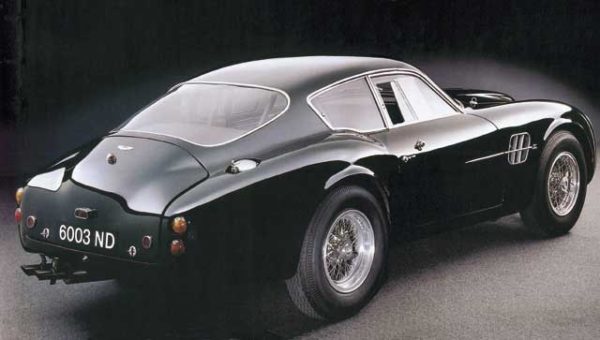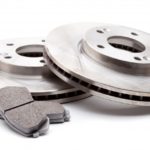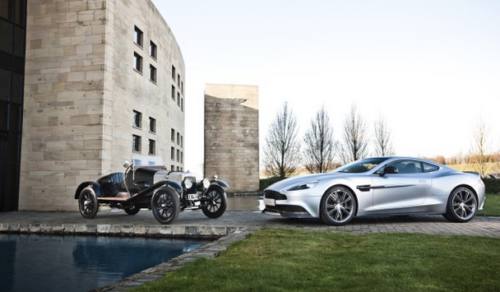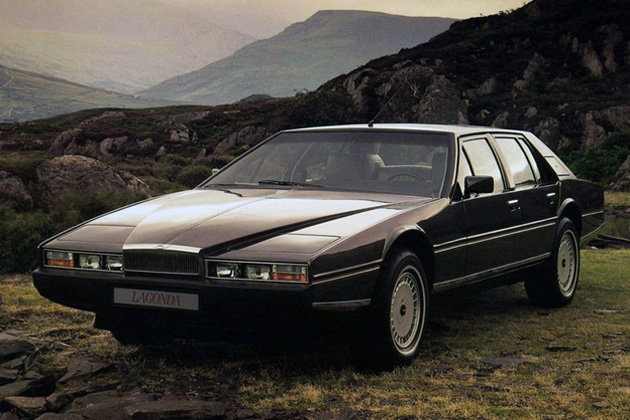Aston Martin DB4 GT Zagato 1960 - 1963 - Model history
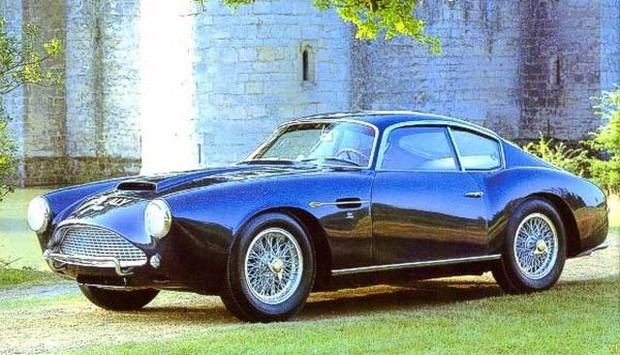
Aston Martin DB4 GT Zagato
Aston Martin The DB4 GT was built to compete with the Ferrari GTO on the racetrack. His failure to do so did not stop him from becoming a legend. Why this is so - the answer most likely lies in its unique design.
The Aston Martin DB4GT Zagato was made with only one goal in mind, and that one is a win over a competitor Ferrarians. He did not succeed, he recorded the only victory when there was no competition from Maranello on the track. In general, the racing career of the Aston Martin DB4 GT could first be described as "disaster". Perhaps the most famous moment of the same happened in Goodwood in 1962, when Jim Clark crashed spectacularly, removing from the track the Surtees' Ferrari 250 GTO - which had just been touring it for a full lap! Sir Stirling Moss described the behavior of Zagat (although the first prototype) in driving with an adjective, which we will decently translate here as "lice". At Le Mans in 1961, Jean Kerguen gave up 50 minutes before the end of the race, but only from third place in the class. His only victory (ok, we lie, there have been several successes in local Australian competitions) was brought by Lex Davison in one of the accompanying races of the English Grand Prix in 1961 - but, as we have already mentioned, without Ferrari on the track. Aston Martin planned to produce an initial series of 25 copies of the Aston Martin DB4 GT, and further visno depending on orders. In the end, they barely managed to make 19 of them, and so they had to sell the last few at a significant discount, after they were in stock for several years. In fact, when Lucien Bianchi broke his Aston Martin DB4 GTZ at Spa (in potentially the brightest moments of this car's racing career, leading several local, Belgian Ferraris), Aston Martin made a replacement, lightweight model, which took over identity, registration (2 VEV) and chassis numbers from the destroyed predecessor. That is why different numbers are still sought in some places, but the truth is simple: there are only 19 original copies of this model. From a technical point of view, this model has not shown anything new or revolutionary - under the lightweight aluminum body hides an ordinary good old Aston Martin DB4 GT (and this one, despite its heavier weight, knew how to beat it in races), and even an ordinary Aston Martin DB4 is not far technical specifications, if we ignore the larger wheelbase and the extra pair of rear seats in the base model.
The search for beauty Aston Martin DB4GT Zagato is unequivocally a legend, and one of the largest in the world of sports cars, although - as we have just seen - it just tragically falls on the exam in as many as three of the five basic categories. With a top speed of 245 km / h (on the test of the magazine "Autocar") and acceleration from zero to one hundred - we are talking about miles! - in 14.1 seconds, Zagat's performance clarifies the legendary status, although it is weaker than Ferrari's SWB and GTO models, and not even three times cheaper (then) Jaguar E-Type is not so far away. The factory-declared 314 hp is considered by most experts to be quite excessive. It is more likely that the first number is 2, but in any case, two is also the first number of the power-to-weight ratio: 270 at the factory, in reality about 250 hp per ton - and that is a very respectable figure forty years later. Despite these great performances, it is obvious that the main, by far the biggest reason for the legendary status of this car is the design. Aston is simply beautiful, one of those absolutely exceptional cars that will take the breath away of everyone, even a layman. This wonderful loser was born under a unique, perfectly happy constellation of stars, and the one among them that largely determines his horoscope is called Zagato. Many years ago, back in the Mussolini era, relatives sued a young Italian nobleman. They claimed that he was no longer mentally capable of disposing of the family property, and their key proof was the absurd amount the young man spent on a special aluminum body, made for his Alfa Romeo by a local artist. The judge asked to be shown the car. As soon as he saw him, he closed the case and acquitted the young man, explaining: "The pursuit of beauty is the most natural human trait." and some of the strangest cars the world has ever seen. Most of them were created in the sixties, when the ingenious and eccentric designer Ercole Spada worked for Ugo's son Gianni. Although Spada personally prefers some later, more radical designs, such as the Lancia Flavia SZ with rear side windows cut into the roof and a broken radiator grille, it is generally believed that his "chef-d'-oeuvre" was the Aston Martin DB4GTZ, his first work. when he was only 23 years old. Stunning lightness The basic Aston Martin DB4 has already been constructed with the intention of maximum relief, according to the so-called "Superleggera" to the Touring body shop system, but that was not enough - the car was still too heavy for racing. So it was made shorter Aston Martin DB4 GT, two seater.

Aston Martin DB4 GT Zagato - interior
However, at the same time, Ferrari shortened the chassis of the 250 model, and the new SWB in the "Competizione" variant also had an all-aluminum body. Touring's chief designer, Carlo Anderloni, then directed John Wyer, the man in charge of Aston Martin's racing projects, to Zagat. From the very beginning, related to the earliest Italian planes in the First World War, weight loss became Zagat's main obsession. Lighter, cars won races and carried the glory of the factory from Milan's Via Giorgini. Elegance was desirable, but not a mandatory companion of lightness. And in fact, elegance is not immanent at all to this Aston Martin either, his curves are curves of muscle and aggression. "I'm strong!" Screams the Aston Martin DB4 GTZ with its appearance, few, on the other hand, will mention sensuality as its obvious feature. In addition, the interior is spartanly stripped, and all windows, except the windshield, are made of plastic. Beauty is almost unparalleled, but the root of that beauty lies in brutality. Like the black panther, the perfection of form is only the embodiment of the original, animal power. And, although we don't know of a single death in the Aston Martin DB4 GTZ, the aforementioned outings of giants like Clark and Bianchi are the best evidence of a dangerous, unpredictable beast hidden behind a beautiful facade. Zagato and GTO are two things you will definitely not notice on this car: straight lines and superfluous details. Everything is subordinated to the function, and the decoration is minimal - a few small signs of Zagat and Aston Martin. What was not necessary, such as bumpers or exterior mirrors, should have been avoided at all costs.
And that's where the secret of the unique beauty of the Aston Martin DB4 GTZ lies: Le Corbusier and the Bauhaus taught us the beauty of the functional, the simple. We all know the story according to which the front air intakes of the Ferrari GTO were created on the model of trifores from the fashion cathedral. The three humps on the hood of the Aston Martin do not have such noble models - they are here simply to cover the protruding parts of the in-line six-cylinder with two camshafts in the head. The GTO is beautiful, but in a somewhat baroque, redundant way. There is a certain "horror vacui", the lines do not flow completely unhindered, each one is interrupted by an opening or a sudden transition. Which of these two cars is more beautiful in the end, judge for yourself, it's a matter of personal taste anyway, there are no exact standards. But the Aston Martin DB4 GTZ is unequivocally, aesthetically pleasing, better designed, its lines are more logical, the merging of the curves is more roady, more perfect - after all, unlike Ferrari, it didn't need victories to become a cult. For me personally, there is no dilemma. Aston is prettier. In one area, Zagato cannot compete with a competitor from Maranello, although it is produced in a smaller series: that is, of course, the price. At the end of the sixties, 1200 pounds were needed to buy a used copy. For the boom of the eighties, one copy with a well-documented racing past sold for 1.500.000 pounds. Today, you will need about a third or half of that amount to buy one of the nineteen, depending on the history of each model. Everyone knows where it is, there are no mysteriously lost specimens. The last unrestored model was found five years ago in Italy. First, Zagato dressed a certain series of V8 models in a new, exclusive suit. Unfortunately, the charm and beauty of its predecessor was not weeded, and this car is today, if not forgotten, certainly considered irrelevant and basically ugly style exercise of the boring eighties, despite the proclaimed 300 km / h (with engine ahead!).
Retrieved from: www.vidiauto.com
Recommendation of similar texts:

Hi there, I am Mladen and I am an auto enthusiast. I started this blog years ago to help like minded people share information about latest cars, car servicing ideas, used car info, exotic cars, and auto technology. You will find helpful articles and videos on a wide variety of cars - Audi, Mercedes, Toyota, Porsche, Volvo, BMW and much more. Ping us if you have anything cool to share on latest cars or on how to make older cars more efficient, or just want to say hi!

